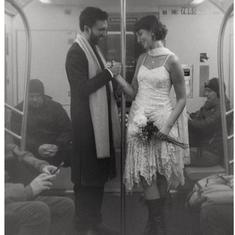To watch the restored Umrao Jaan is to open an old chest stuffed with barely creased clothing and baubles that are still shiny. Muzaffar Ali’s movie from 1981 has been re-released in cinemas by the PVR Inox multiplex chain following a beautiful restoration by the National Film Archive of India.
The classic film about a bygone era looks as good as new. The eye can barely drink in Subhashini’s Ali’s magnificent costumes, the fashion-forward jewellery, the interior sets that evoke the cloistered world of a courtesan in Lucknow in the mid-nineteenth century. Rekha – resplendent, incandescent, one with her character – is the brightest jewel in a film about an age of beauty, refinement and Urdu poetry.
Ali’s adaptation of Mirza Hadi Ruswa’s historical fiction novel Umrao Jaan Adaa, written along with Javed Siddiqui and Shama Zaidi, is set in the 1840s. The main setting is Lucknow, which is steeped in tawaif culture but is also on the verge of losing this unique ethos.
In Satyajit Ray’s Shatranj Ke Khilari (1977), two noblemen represent the bridge between the indolent present and the uncertain future. In Umrao Jaan, that role is played by Umrao.
She is one of Lucknow’s prized tawaifs, renowned for her sensual dancing and original poetry. By writing the ghazals that she performs for her clients, Umrao is in control of her career, if not quite her fate.
Umrao’s heavy-lidded gaze and modest air conceal the pain of being kidnapped as a child and sold to a brothel run by Khanum (Shaukat Kaifi) with a big smile and a tough hand. Khanum has trained Umrao and her own daughter Bismillah (Prema Narayan) in the skills they need to entice customers. The goal might be money and gifts of jewellery, but the ensnaring is exquisite.

Sensitive, intelligent and with a touch of melancholy, Umrao gets involved with the wealthy Nawab Sultan (Farooque Shaikh). Umrao’s other suitors include the brothel hanger-on Gohar (Naseeruddin Shah) and the dacoit Faiz (Raj Babbar).
Judiciously placed and haunting songs, composed by Khayyam, written by Shahryar and performed for Rekha by Asha Bhosle, accompany Umrao’s journey from successful courtesan to questing daughter.
Like its tawaifs, the 145-minute film is imbued with a sense of majesty and poise. Perfumed men, with all the time in the world for the pursuit of pleasure, watch the dancers seduce through words and minimal bodily movements (the choreography is by Kumudini Lakhia and Gopi Krishna).
Muzaffar Ali’s evocation of a lost age of grace unfolds through slow camera movements and tight close-ups. Rekha’s visage has rarely been more alluring, or enigmatic. The sweet lilt of Urdu and the predominantly Muslim characters point to another kind of loss – of an Islamicate heritage of sophistication and wealth.

Some of the film’s scenes are clunky, with the later portions rushing to pack in Umrao’s connections with other characters. The brothel is where Umrao feels the safest, and it is within this gilded cage that the 145-minute film is most compelling.
Ali fills Umrao’s refuge with a host of memorable actors, from the redoubtable Shaukat Kaifi to a delightfully slippery Naseeruddin Shah. Prema Narayan, Dina Pathak and Gajanan Jagirdar complete Umrao’s world. The women are not helpless victims but drivers of their destinies, especially Narayan’s Bismillah.
On a continuum of tawaif films, Umrao Jaan is between Kamal Amrohi’s Pakeezah (1972) and contemporary efforts by Sanjay Leela Bhansali. Umrao Jaan initially has a documentary feel, with Ali drawing explicit connection between actual tawaifs and his fictional characters.
One of Umrao Jaan’s most poignant songs, Yeh Kya Jagah Hai Doston, is performed for commoners rather than aristocrats. In this moment, Umrao stands between what was and what is to come, the dream that was Lucknow and a future that has all the rudeness of reality.
Also read:
‘Umrao Jaan’ director Muzaffar Ali: ‘The film has aged gracefully. It’s timeless but fresh too’










